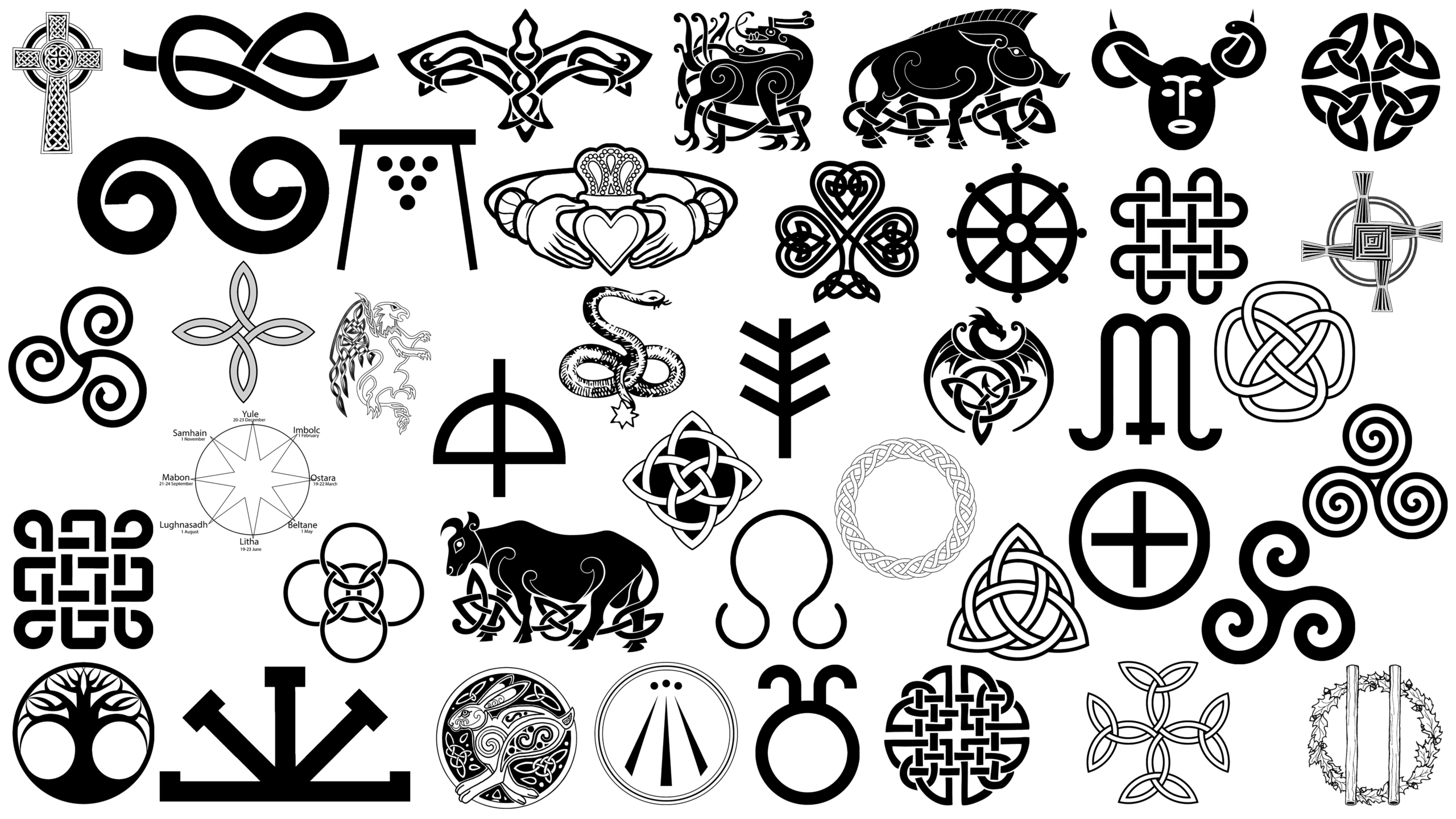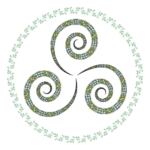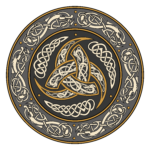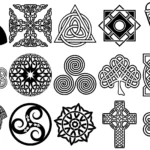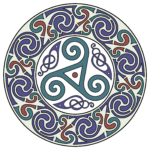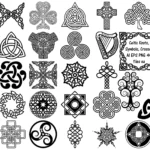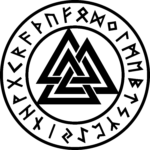Hey there, folks! Let’s dive into the awesome world of Celtic symbols. These cool designs and patterns are more than just pretty pictures. They’re packed with ancient wisdom and stories that tell us about the beliefs and culture of these mysterious people. We’ll uncover the secrets of the triquetra, the triskele, and a whole bunch of other symbols that show us how the Celts saw the world and their place in it. So get ready for a fascinating trip into the Celtic realm of yore!
Celtic Symbols: Unlocking the Secrets of Ancient Lore
Imagine stepping back into the misty realm of ancient Celtic lands, where intricate symbols whispered tales of beliefs, values, and a rich spiritual tapestry. These Celtic symbols, adorned on ancient artifacts and illuminated manuscripts, carry meanings that have intrigued generations.
Let’s dive into their world:
The Iconic Triquetra: A Symbol of Trinity
Picture a beautiful Celtic knot with three intertwined arcs. That’s the triquetra, also known as the Trinity knot. It’s not just a pretty design; it’s a symbol of the three worlds that the Celts believed in: the physical, the spiritual, and the celestial.
Art and Symbols: A Timeless Connection
Celtic symbols weren’t just decoration. They were a way for the Celts to express their connection to the natural world, their ancestors, and their culture. Carved into towering monuments and illuminated in vibrant manuscripts, these symbols showcased their artistry and spiritual beliefs.
The triquetra, when enclosed within a circle, symbolized both protection and the unity of all three worlds. It whispers of the connection between the elements of earth, air, and water.
Celtic Symbols in Modern Times: A Heritage that Lives On
Centuries later, Celtic symbols still hold a special place in our hearts. They’re not just symbols of a bygone era; they’re a link to our ancestry, a celebration of a vibrant culture that continues to inspire.
Exploring the Meanings: A Journey of Discovery
Each Celtic symbol carries a unique story. Let’s explore a few examples:
- Triskele: A whirling circle with three arms, representing constant motion and the natural cycle of birth, life, and death.
- Celtic Cross: A fusion of ancient Celtic and Christian symbols, embodying the union of the material and spiritual worlds.
- Ogham: An ancient Celtic script used for both writing and connecting with the natural world.
- Ankh: A symbol of life and eternity, representing the balance of opposites and the unity of all things.
Understanding these symbols is like unearthing a treasure from the past. They open a window into the minds and beliefs of our Celtic ancestors, connecting us to a rich cultural heritage that continues to resonate today.
Celtic symbols have been used for centuries to represent a variety of meanings. Discover the meanings of ancient Celtic Symbols and how they are still used today.
Celtic Symbols: Unraveling Their Enigmatic Meanings and How Do They Relate to the Ancient Celts?
Imagine if you could communicate with ancient people, not through words, but through symbols and images. That’s what Celtic symbols were all about—a hidden language that spoke volumes about their beliefs, values, and connection to the world around them.
These symbols, from swirling spirals to intricate knots, weren’t just pretty decorations; they held deep spiritual and protective power. Like a secret code, they revealed the ancient Celts’ understanding of the cosmos, the cycles of life and death, and the interconnectedness of all things.
Delving into the Celtic Symbolism
Let’s explore some of these fascinating symbols and what they meant to the ancient Celts:
- Triskelion: Three graceful legs forming a spiral, symbolizing movement, progress, and the journey of life.
- Celtic Cross: A fusion of the Christian cross and the ancient sun wheel, representing the union of the spiritual and earthly realms.
- Triquetra: Three interwoven triangles, representing the Trinity, balance, and the harmony of all things.
- Awen/Arwen: Three rays flowing from a central point, symbolizing inspiration, creativity, and the balance of intellect, emotion, and spirit.
- Ailm: An intricate knotwork design that resembles an eternal loop, representing the interconnectedness of all living things.
- Claddagh Ring: An Irish ring featuring clasped hands holding a heart, signifying love, loyalty, and friendship.
- Carolingian Cross: A cross with arcs extending from the center, symbolizing the four elements or the four evangelists.
These symbols were etched into jewelry, weapons, and pottery, becoming a potent reminder of Celtic identity. They played a vital role in rituals, beliefs, and everyday life, safeguarding and guiding the ancient Celts on their earthly journey.
Key Points:
- Celtic symbols were a manifestation of Celtic culture and spirituality.
- They embodied concepts of nature, spirituality, life, death, and protection.
- Symbols like the Triskelion and Celtic Cross represented the cycles of life and the interconnectedness of the world.
- Celtic symbols weren’t just decorative, but held profound spiritual and protective significance.
- They continue to resonate today, connecting us to the ancient Celtic heritage.
So, there you have it—a glimpse into the enigmatic world of Celtic symbols, a testament to the ingenuity and spiritual depth of an ancient civilization.
What is the Significance of the Triquetra?
Hey there, curious minds! Let’s dive into the fascinating world of the triquetra, a symbol that’s been around for centuries, weaving its way into Celtic culture.
Picture this: three graceful arcs intertwining to form a perfect triangle. That’s the triquetra, also known as the Celtic triple knot. It’s a timeless symbol that’s much more than just a pretty design.
In Celtic tradition, the triquetra represents the trifecta—that all-important concept of threes. It stands for:
- The three realms: Earth, where we walk; the sea, where we sail; and the sky, where we gaze upon the stars.
- The three life stages: from birth to adulthood to the twilight years.
- The eternal spiritual cycle: life, death, and rebirth.
But wait, there’s more! Over time, the triquetra has been adopted by other groups, like Christians, who found it perfectly suited to represent the Holy Trinity.
Today, you’ll find the triquetra popping up everywhere, from jewelry to art to even architecture. It’s a symbol that continues to touch people’s hearts, reminding us of the wisdom and beliefs of our ancient Celtic ancestors.
Celtic Symbols and What Are Their Different Interpretations?
Celtic symbols, like ancient puzzles woven into intricate knots, hold meanings that have kept people captivated for centuries. They’re not just pretty designs; they’re like whispers from the ancient Celts, telling stories about life, nature, and the connections between us all.
Key Ideas
- Celtic symbols represent deep thoughts about life’s journey, the elements around us, and even the divine.
- The Triskelion, with its three spirals twirling together, speaks of motion, growth, and the smooth flow of existence.
- The Celtic Cross is a mix of Christian and old-time Irish beliefs, showing the joining of spiritual and earthly realms.
- The Triquetra, a triangular knot, is a symbol of three parts becoming one, like mind, body, and soul.
- The Ailm, drawn as a strong tree, stands for strength, never giving up, and the everlasting power of life.
- The Claddagh Ring, an Irish treasure, shows love, loyalty, and friendship, capturing the essence of human connection.
Exploring the Meanings
Now, let’s dive a little deeper into the stories behind these symbols.
Triskelion: Trinity, Elements, or Life’s Journey?
Some say the Triskelion’s spirals show the three stages of life: being born, living, and eventually returning to where we began. Others think it represents the earth, sea, and sky. But it can also be a reminder that life keeps moving, changing, and flowing.
Celtic Cross: Sun, Elements, or Christian Unity?
With its intricate crisscross lines, the Celtic Cross often brings to mind the sun and its life-giving rays. It can also be seen as a picture of the four elements: earth, air, fire, and water. Or, in Christian tradition, it symbolizes the Father, Son, and Holy Spirit.
Triquetra: Father, Son, Holy Spirit, or Mind, Body, Soul?
The Triquetra’s three interlaced triangles are like a unity symbol, showing the interconnectedness of all things. It’s said to represent the Father, Son, and Holy Spirit in Christianity. But it can also be seen as a nod to the mind, body, and spirit or the balance between the past, present, and future.
Ailm: Strength, Tree of Life, or Connection?
When you see the Ailm’s tall, proud tree, it speaks of strength and staying power. It’s a reminder of the unbreakable bond between people and nature. It’s like a living symbol of our deep roots and the everlasting power of life.
Claddagh Ring: Love, Loyalty, Friendship, or All Three?
The Claddagh Ring is a beautiful expression of human connection. The heart represents love, the hands symbolize friendship, and the crown signifies loyalty. It’s often given as a token of affection, a promise, or an unbreakable bond.
Celtic symbols, with their beauty and profound meanings, continue to touch our hearts and minds. They’re a testament to the rich history of the Celts, connecting us to our past and inspiring us with their timeless wisdom. 
FAQ
Q1: What do Celtic symbols represent and how do they relate to the ancient Celts?
A1: Celtic symbols are deeply rooted in the beliefs and worldview of the ancient Celts. They represent a wide range of concepts, including nature, spirituality, protection, strength, and the cycles of life. The Celts used these symbols as a way to express their cultural identity, connect with their ancestors, and navigate the complexities of the natural world.
Q2: What is the significance of the triquetra and what are its different interpretations?
A2: The triquetra, also known as the Celtic Trinity Knot, is one of the most iconic Celtic symbols. It consists of three interlocking arcs that form a triangular shape. The triquetra has many different meanings, including the Trinity (Father, Son, and Holy Spirit), the three elements (earth, air, and water), and the three stages of life (birth, life, and death).
Q3: How are Celtic symbols used to express belonging and connection to the past?
A3: Celtic symbols serve as a powerful means of expressing belonging and connection to the shared cultural heritage of the ancient Celts. They represent a collective identity that transcends geographical boundaries and modern-day ancestry. By incorporating Celtic symbols into their art, jewelry, and other cultural practices, people can affirm their connection to their Celtic roots and celebrate the traditions of their ancestors.
Q4: What is the meaning of the triquetra when it is enclosed within a circle?
A4: When the triquetra is enclosed within a circle, it symbolizes protection and unity in spirit. The circle represents the protective power of the divine, while the triquetra represents the interconnectedness of all things. Together, these symbols represent the idea of being safeguarded and connected to the spiritual realm.
Q5: In what ways do Celtic symbols serve as a means of cultural identity and connection?
A5: Celtic symbols play a vital role in fostering cultural identity and connection among Celtic communities. They represent a shared cultural heritage that unites people across generations and geographical distances. By using these symbols in art, music, storytelling, and other cultural practices, Celtic people can express their pride in their heritage and maintain a strong sense of community.
- Unveiling the Enigma: Mansoureh Khojasteh Bagherzadeh’s Public Appearances & Private Life in Iran - July 18, 2025
- Unveiling the Mystery: Mansoureh Khojasteh Bagherzadeh’s Husband: A Rare Glimpse into a Private Life - July 18, 2025
- Unveiling Masoud Khamenei’s Mother: Power, Influence, and Iran’s Future - July 18, 2025
